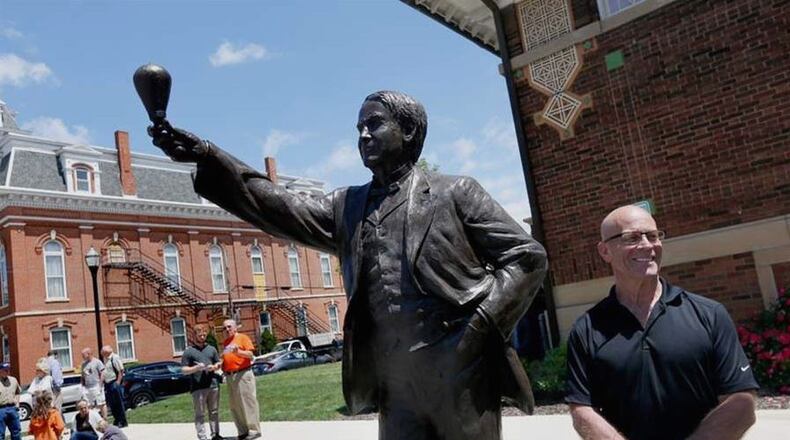“Symbols of the confederacy should be removed from taxpayer-funded public property and put in museums where they belong.” Brown, D-Ohio, said in a statement.
For Ohio, the issue had already been decided. The state decided in 2010 to replace a statue of former Ohio Gov. William “Earthquake” Allen with inventor Thomas Alva Edison. Allen, the state’s governor from 1874 to 1876, never fought in the Civil War, but was an outspoken opponent of President Abraham Lincoln and was sympathetic to slavery.
State leaders gathered votes to determine who should replace Allen, and Edison beat out the likes of the Wright Brothers and Olympic athlete Jesse Owens to become one of 35 statues in Statuary Hall. Allen’s statue is now in Chillicothe.
In all, 100 statues in the Capitol Building — some are scattered in hallways or in the Capitol Visitors Center — represent the achievements of the 50 states. Edison is accompanied by former President James A. Garfield in representing Ohio.
Some of the statues have garnered additional scrutiny in the days since violent protests erupted last weekend in Charlottesville, Va., over the decision to remove a statue of Robert E. Lee, who led Confederate troops during the Civil War. Lee is one of the statues representing Virginia; it now stands in the crypt of the U.S. Capitol.
A Washington Post analysis of statues in the Capitol found that there are 12 statues of Confederate soldiers and politicians and just four of African-Americans: Civil rights pioneers the Rev. Dr. Martin Luther King and Rosa Parks and abolitionists Frederick Douglass and Sojourner Truth.
In the aftermath of the Civil War, Lee himself appeared to discourage memorials to the war or to those involved.
“I think it wiser, moreover, not to keep open the sores of war but to follow the examples of those nations who endeavored to obliterate the marks of civil strife, to commit to oblivion the feelings engendered,” he wrote in an 1869 letter published in a Virginia newspaper.
Booker, D–N.J., announced late Wednesday he would introduce a bill seeking the removal of the Confederate statues. One day later, House Minority Leader Nancy Pelosi, D–Calif., echoed his call, saying the statues are “reprehensible.”
“The halls of Congress are the very heart of our democracy,” she said, calling upon Speaker Paul Ryan to remove the Confederate statues “immediately.” “The statues in the Capitol should embody our highest ideals as Americans, expressing who we are and who we aspire to be as a nation.”
For his part, President Donald Trump defended the memorials Thursday, tweeting in part, “Sad to see the history and culture of our great country being ripped apart with the removal of our beautiful statues and monuments. You can’t change history, but you can learn from it. Robert E Lee, Stonewall Jackson — who’s next, Washington, Jefferson? So foolish!”
About the Author
